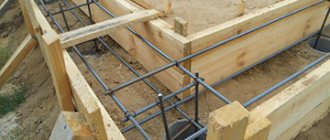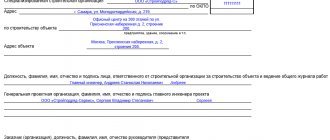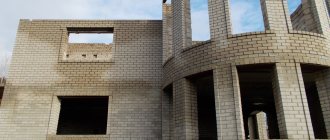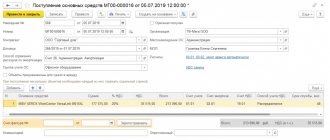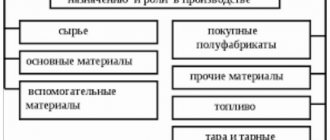Any production needs a certain amount of consumable raw materials, and correctly calculating it means increasing your profitability. However, when it comes to construction, especially large ones, there may be a large or small imbalance in resource consumption. And then the important point becomes how to properly write off used and available materials designed for the construction of the facility, but left unused. Regardless of the volume of consumption, the procedure must be carried out and followed in all respects.
Who is responsible?
The first question is who is responsible for writing off construction materials during production. The answer is specially appointed employees directly involved in the sale of commodity and material assets. For 2021, these are: engineers, representatives of the accounting staff, production site managers, financially responsible persons. Their task, supplementing the composition of the construction technical department (production and technical department), is to control the use of materials resources calculated by cost estimating engineers.
The list of appointees is approved by the director of the enterprise, simultaneously describing the functions of each and indicating the need for the final documents to be signed by the chief engineer and the head of the technical and technical department.
Separately, accountants are assigned the following responsibilities:
- ensure that the consumption and overconsumption of materials in construction does not exceed acceptable standards;
- suppress attempts to write off working raw materials without proper grounds, for example, under the guise of a mythical loss;
- recognize and eliminate cases of higher quality construction materials being included in the list of write-off resources than were actually used;
- draw up write-off documentation.
The more professionally the document flow and write-off of construction materials is organized in the accounting department or its replacement body, the easier it is to monitor the material base in production, to protect the business from theft and rise in cost.
ACT on write-off of materials for current repairs
No. _______________ dated “__” _______________ 20___
The commission consists of: chairman _____________________________________________ and commission members __________________________
_________________________________________________________ have drawn up this act stating that the following was spent on current repairs:
| No. | Item number | Name of material | Unit change (code) | Completed work | Write-off rate, quantity | Actually spent | Cor. account code | ||||
| type of work | units change | volume | quantity | price | sum | ||||||
| Total | |||||||||||
________________________________________________________________________________________________________________________
(Suma in cuirsive)
Chairman
commissions: _______________________ ______________________ _________________________
(position) (signature) (surname, acting)
Members
commissions: _______________________ ______________________ _________________________
(position) (signature) (surname, acting)
_______________________ ______________________ _________________________
(position) (signature) (surname, acting)
_______________________ ______________________ _________________________
(position) (signature) (surname, acting)
Download the document “Act on write-off of materials for current repairs”
Process Tools
The next basis is a combination of an algorithm, legislation and relevant knowledge.
The algorithm implies 3 ways of implementation:
- At the cost of one unit of a material resource - convenient for writing off at the purchase price of especially valuable goods.
- By average cost - most suitable for a large assortment of material inventories, it looks like the arithmetic average between the number of units and their total cost.
- FIFO method - takes into account resources, starting with the earliest acquisitions, but in reverse order, the first to “go” are those special materials that are listed as the last to appear. Also in Russia, an alternative to FIFO is used - LIFO. Here the order of liquidation is normal, chronological.
Thus, the current rules for writing off materials in construction are based, first of all, on the correct determination of the cost of raw materials. The actual cost is calculated including:
- initial value (price);
- transportation costs;
- payment for services (consultants, intermediaries, etc.);
- customs expenses.
One write-off method is selected; it will have to be applied throughout the entire reporting period.
The procedure and content of the process of rationing building materials
The process of standardization in construction consists of regulating the use of building materials during the execution of work. The main stages of standardization are:
- Analysis of the conditions under which construction work will take place. At this stage the following is carried out:
- final selection of materials (taking into account the requirements of technical design documentation, GOST and SNiP);
- organization of the work process;
- definition of a unit of work;
- determination of consumables to complete a unit of work.
IMPORTANT! A unit of construction product is a component of the construction flow. Construction flow - uniform, continuous execution of construction work (progress). When standardizing, the following can be taken as a unit:
- separate area of work;
- part of an object under construction (for example, a foundation or a wall);
- one entire object or a group of homogeneous objects (for example, the construction phase of a cottage community of 20 standard houses);
- takeover is a private flow that covers several elements of the main one (for example, custom finishing of part of the apartments in a new building).
- Determination of the standard consumption of each building material per unit of work. According to RDS 82-201-96, cost standards can be:
- Enlarged - by complex of works. They are used at the design stage to select technological solutions.
IMPORTANT! Integrated standards cannot be used to write off building materials.
- Averaged - according to estimate documentation. Needed to determine the total amount of resources required for construction.
IMPORTANT! Average standards cannot be used to control the actual write-off of materials, as well as for payments for construction work (between customers and contractors).
- Elemental - consumption for the selected unit of construction work. They are the ones that should be used when calculating and approving standards for write-off of materials during construction work (as well as for settlements between customers and contractors).
- Monitoring compliance with consumption standards when performing work and adjusting standards if necessary. Here we should mention another specific thing in the construction process - normal.
Normal is an indicator or characteristic that most fully corresponds to the technical process. Determined taking into account a set of parameters. For standard work, there are usually already developed standards that can be relied upon when developing write-off standards.
The main principle of rationing is the unity of the normal and the standard. If the consumption according to the established standard leads to a deviation from the norm, the standard needs to be revised.
EXPLANATIONS from ConsultantPlus: From January 1, 2021, FAS 5/2019 “Inventories” is in effect, approved by Order of the Ministry of Finance of Russia dated November 15, 2019 N 180n. At the same time, PBU 5/01 and Guidelines for accounting of inventories are no longer valid. You can start applying the Standard earlier. For details, see the review from ConsultantPlus. If you do not have access to the K+ system, get a trial online access for free.
Accounting techniques
The main accounting tools in registering production resources are postings or articles. For each case of cheating there is its own wiring. For example, a debit (account) of 20 with a credit of 10 indicates the write-off of raw materials of the main production, and a debit of 94 with a credit of 10 indicates the cancellation of shortage material.
There is a whole network of similar entries that competent accountants know by heart and use competently. In addition, they are in charge of using 1C software, with which the question of how to write off materials for the construction of an object is solved even more professionally and simply.
Instructions for filling out a report on form M-29
The document opens with a title page, which includes the name of the construction project, as well as the period of work (start and completion dates). Everything is clear here and this part should not cause any difficulties.
Next comes the first main page of the report, which is filled out by specialists from the production and technical department of the enterprise before the construction team begins their work duties. It prescribes standards for the consumption of this or that material for construction. The first column contains the specific name of the work , its code (if such coding is used), the unit of measurement of the materials spent on it (meters, kilograms, cubes, pieces, etc.).
Next, the justification for the consumption norms is entered (here is a link to the sections, tables, items of the collections that are used by the PTO engineers of this construction organization to calculate the norms) and the norm itself (based on the same documents).
The second page of the report is reserved for entering numerical data on the volume of material consumption .
The figures must be entered here regularly, after the end of each reporting month.
This section is filled out by the employee directly responsible for the work and consumption of materials at the site (site manager or senior foreman).
Filling out the second section of the report on form M-29
This section contains data on the actual costs of building materials and the results of a comparison of actual costs and established standards (this can be savings, overruns, or zero). These results are determined monthly in the form of subtracting pre-established norms from actual expenses.
Overspending must be indicated with a minus sign, and savings with a plus sign. If there is an overrun in the future, the site foreman must write an explanatory note (also according to a special sample).
All information is entered opposite each name of materials, products and structures in the corresponding column of the month.
Then, in the “write off to cost” column, enter a figure for the number of materials that are subject to write-off. If the amount of materials actually consumed is less than what is calculated according to the standards, the actual consumption should be written off as cost.
If the situation is accurate, or vice versa, but the excessive consumption of materials is caused by necessity and is justified (for example, due to production reasons), then as much materials as the head of the enterprise allows by separate order are written off to the cost of construction and installation work.
All of the above information must be certified by the foreman or site manager, and also, after analysis and verification, by the signatures of a specialist in the production and technical department, an accountant and the head of the construction organization (in this case, the chief engineer).
The last page of the document contains the final data on the consumption of building materials, by year and from the start of construction. These figures may well coincide if the period of construction and installation work was within one year.
assistentus.ru
Accompanying documents
The entire package of documentation for the write-off of building materials in production consists mainly of relationships with suppliers and their behavior under the supply agreement. But the basics are a must for any construction venture.
These are documents such as:
- the standard for consumption of construction raw materials for specific construction approved by the director of the enterprise;
- working estimate;
- log of work performed;
- reporting summary of the actual expenditure of provided resources indicating the difference with the established standards.
For 2021, in Russia, companies have the right to set their own standards for the sale of inventory, but they should not contradict the requirements of the State Register of Inventory. Therefore, it is best to use the standards of the M29 form together with the standard current instructions for its maintenance.
The form can and should be supplemented and adapted to a specific case individually, but two chapters should always be in it:
- estimated volume of resources and number of completed works;
- reconciliation of calculated volumes with actual consumption within the framework of established standard standards.
The technical department is responsible for the first section, and the foremen and site managers are responsible for the second.
Direct Action
A step-by-step algorithm for writing off raw materials on your own looks like this:
- initial condition - production management is provided with a monthly mathematical report on cash inventory items in the warehouse;
- within the period prescribed by management, but no later than the reporting period, the financially responsible person draws up form M29 and submits it to the technical department for reconciliation;
- an employee of the technical department conducts an inspection, and the head of the department approves the verified documents, after which he passes them on to the chief engineer;
- The GI studies the received documentation, confirms his visa, and transfers the package to the financiers;
- the accounting department verifies the cost of incoming and outgoing construction materials and displays the actual balance based on the results;
- The responsible accounting department specialist enters data into the inventory flow grid, applies the necessary closing entries, after which the written-off units are considered fully used.
Scheme of procurement and document flow
In order for everything to go smoothly, the movement of inventory and materials must begin to be taken into account already from the stage of preparing design estimates.
Formation of Requirement-Invoice
Legal basis
The following main legislative acts tell how to write off building materials in Russia:
- Order-613, 1982, Center for Statistics - dedicated to the M29 form.
- Appendix to Order-613 - instructions for drawing up construction reports on the costs of fixed assets and materials.
- Goskomstat Resolution-71a, 1997 - standard documentary forms of key invoices involved in write-off.
- FZ-402, “On accounting”.
Based on a particular proceeding, other, more narrowly focused rules that legal specialists know may be needed.
Write-off of material assets
The material assets of the organization include:
- raw materials;
- stocks;
- unfinished production;
- finished products.
Write-off of material assets refers to the documented removal of material assets from the organization’s records. The need to write off inventories most often arises due to the following circumstances:
- putting raw materials into production;
- end of service life;
- wear;
- breaking;
- loss of quality as a result, for example, of a flood or fire;
- incurring losses in connection with the maintenance of material assets.
These circumstances are usually identified by persons responsible for material assets in the organization. In all cases, accounting for such material assets is unprofitable for the organization and entails additional costs. In addition, failure to write off material assets may become the basis for abuse by persons directly working with material assets. However, in order to directly carry out actions to write off material assets, it is necessary to issue a special act from the manager - an order to write off material assets.
Consequences of overspending or shortages
It happens that the final reporting on special materials shows a discrepancy between income and expenses. Here, the main person at the site should draw up an explanatory note based on the corresponding M29, and attach to it an act on the write-off of materials in construction in the prescribed form. The act is carried out and approved by a special commission.
The result of studying the act with an explanatory note is two scenarios:
- it is established that the discrepancy is associated with theft, dishonest performance of duties (damage, loss) - the management of the enterprise must involve regulatory authorities to confirm what happened;
- overexpenditures (shortages) are recognized as valid - management has the right to give the go-ahead to remove them from the balance sheet.
In general, the head of the entire construction campaign is responsible for the correct registration of the movement of building materials and their waste. So it is in his interests to competently organize proper accounting and identify the true culprits of the losses.
If you find an error, please select a piece of text and press Ctrl+Enter.
Didn't find the answer to your question? Find out how to solve exactly your problem - fill out the form below or call right now: +7 (ext. 692) (Moscow) +7 (ext. 610) (St. Petersburg) +8 (ext. 926) (Russia) It's fast and free!
What laws set limits on the write-off of building materials?
There is no firm rule in accounting laws according to which materials must be written off for production. However, paragraph 92 of the Order of the Ministry of Finance dated December 28, 2001 No. 119n states that materials must be released from the warehouse in accordance with the standards of the production program. This rule assumes that write-offs cannot be uncontrolled. The volumes during the operation must comply with approved standards. There is also Article 252 of the Tax Code of the Russian Federation, according to which all expenses of an enterprise must be supported by documents. Spending must also be reasonable from an economic point of view.
The company independently approves consumption standards based on the following documents:
- SNiP 82-01-95. Here are the general rules.
- RDS 82-201-96. Here you can find answers to specific questions, as well as examples of calculations.
When approving standards, specific papers may also be used:
- GESN . The document specifies standards for specific types of construction.
- MDS . Here you can find recommendations for using GESN.
The basic volumes for write-off will depend on the construction project. For example, the concrete used in the construction of a residential or industrial building will vary. The standards regarding this aspect are given by GOST and SanPiN. Expert opinions may also apply.
The limits approved by the enterprise must be fixed in estimates and various internal documents. Documents are compiled by the department responsible for the technological process. After the papers are developed, the director of the company must approve them. Write-offs must be made in accordance with established standards. It is possible that the approved limit may be exceeded, but this situation should alert the manager. In particular, he will need to establish the reasons for exceeding the standards. For example, this could be defective materials or technological losses.
IMPORTANT! Writing off materials in excess of approved standards can only be done with the permission of the manager. On the primary documentation (invoice, act), a note is placed on the supply of building materials in excess of the limit and the reasons for such an operation. If the write-off is carried out without complying with these rules, it will be unlawful. Such actions can lead to distortion of costs and the entry of incorrect data in tax reporting and accounting.




